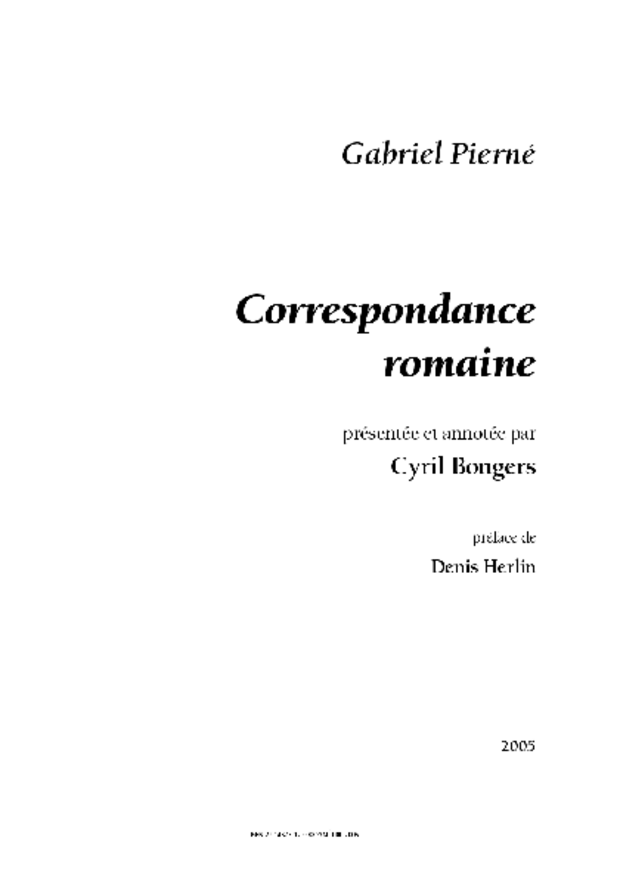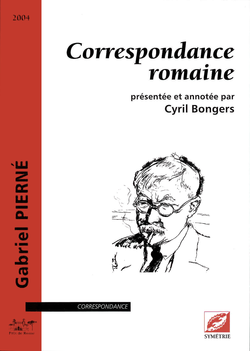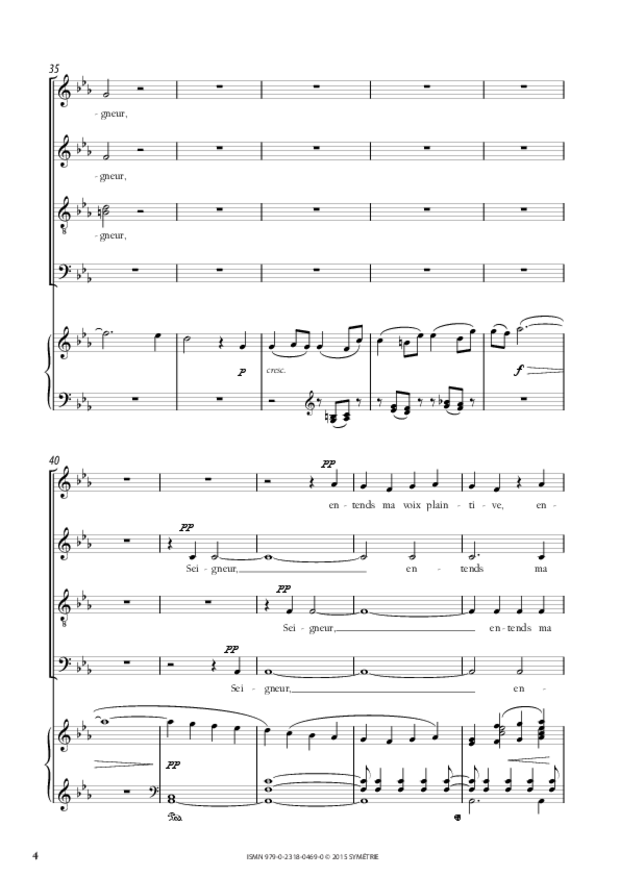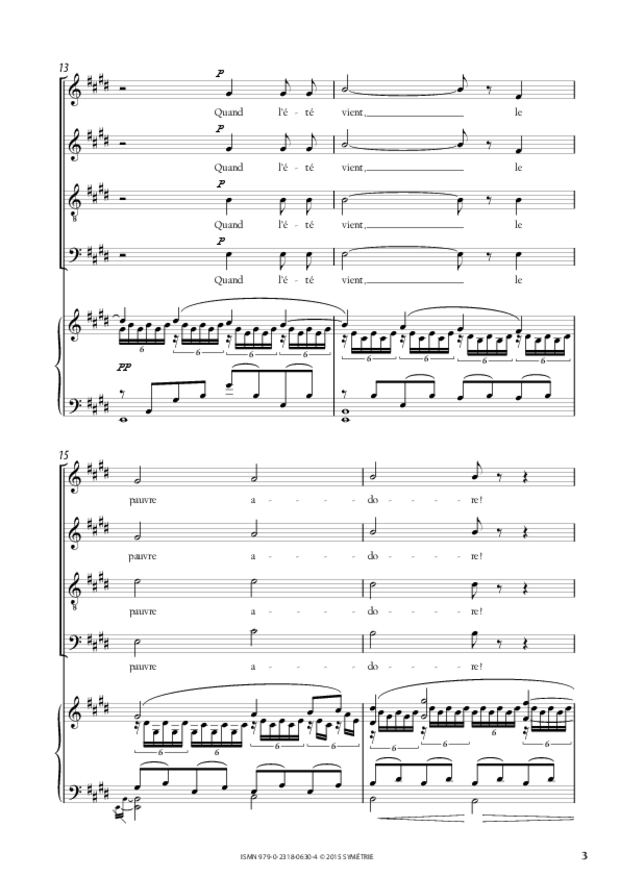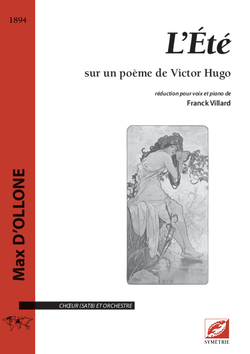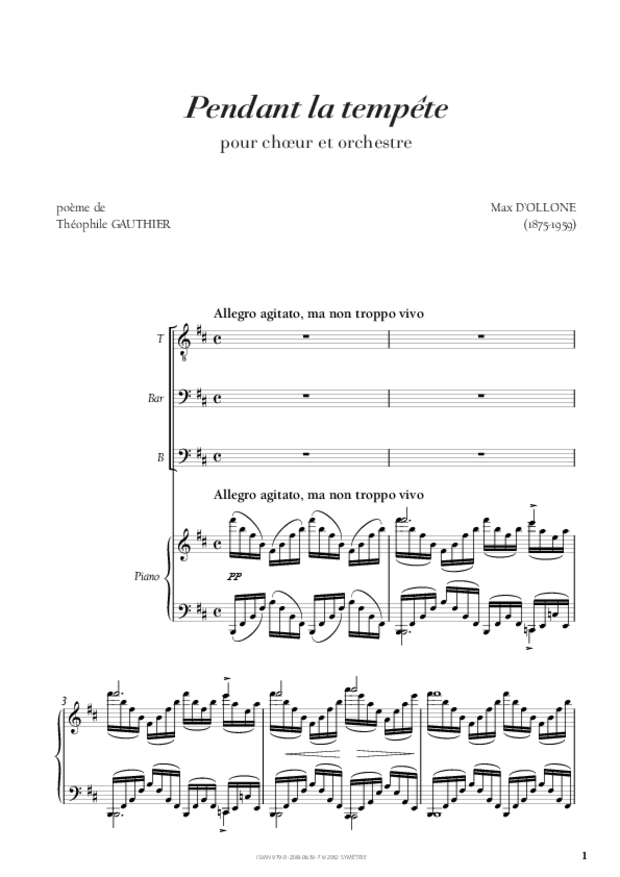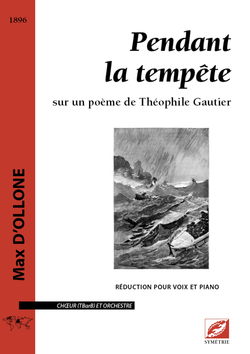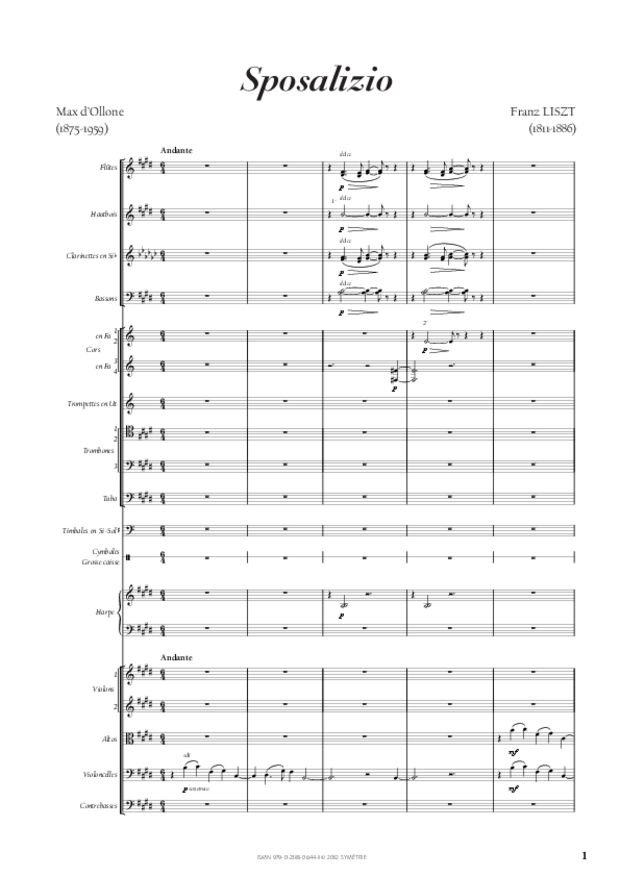Far from being an isolated work in Max d’Ollone’s production, Sous-Bois (Underwood) belongs with L’Été, Hymne and Dans la tempête to a set of four chorus written in the particular context of the competition for the Prix de Rome. It was established in 1803 and cancelled following the events of May 1968. It had been for more than a century and a half, the most coveted French award for music composition. Organized by the Institut de France, it ensured its laureates, if not the sureness of an easy future career, at least a major gateway to the artistic world, and a few years of residence in Italy at the prestigious Villa Medici. As a matter of fact, very few did resist the draw of this award, a potential dazzling culmination of long years of study. Even among the most progressive representatives of French art like Berlioz, Debussy or Ravel, all strived to meet the rather conservative expectations of the Académie des beaux-arts. From 1894 d’Ollone took part in the competition. The first round was eliminatory and candidates were to write in one week a fugue and chorus with orchestral accompaniment on an imposed poem. The second round consisted in the composition of a great cantata for three solo voices, such as Frédégonde, with which he won the distinguished First Grand Prize.
Completed on 12th May 1897 for his fourth and last participation to the Prix de Rome, Sous-Bois doesn’t account for d’Ollone’s most representative and advanced works. It is an early work written for a competition meant to meet several requirements imposed on the musician. Nonetheless, between the rather normal influence of Jules Massenet, the respect of a certain academic tradition of elegance and clarity and the pure technical display, the expression of a real sensitivity can be found. How could one not admire the delicate balance achieved between the rich accompaniment and the apparent simplicity of the choral writing? Faithful to the spirit of Philippe Gille’s poem, the composer achieved with a natural, almost sensual freshness to display his mastery of form and colours, of harmony and couterpoint, in a homogeneous whole with a rare self-assurance in a such a young musician. Deeply rooted in the legacy of the French 19th century at a time where musicians were exploring new horizons, Sous-Bois shows the particular esthetics so typical of the works of the Prix de Rome. Long criticized as mere deeply outdated style exercises, they nonetheless conceal beauties that one should rediscover.
Cyril Bongers
(translation Philippe Do)
Audio Excerpt
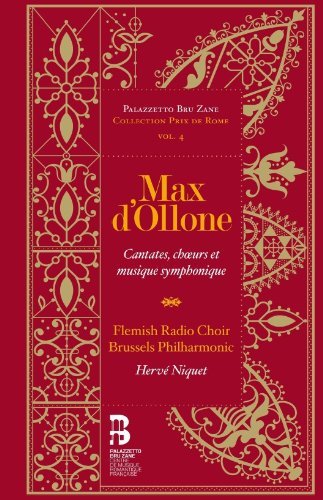
Sous-bois
Nomenclature
2 flûtes, 2 hautbois, 2 clarinettes, 2 bassons, 2 cors, timbales, cordes
All available forms
-
sheet music pour chœur (SATB) et orchestre
-
matériel (2.2.2.2. – 2.0.0.0. – timb - 10.8.6.5.4)
2 flûtes, 2 hautbois, 2 clarinettes, 2 bassons, 2 cors, timbales, cordes · 4 min · 21 x 29.7 cm · stapled booklet · ISMN 979-0-2318-0637-3
Publisher : Symétrie
Price : €200.00
-
réduction pour voix et piano
16 pages · ISMN 979-0-2318-0636-6 · minimum order quantity: 20
Publisher : Symétrie
Price : €15.00
-
conducteur de lecture au format A4
19 pages · ISMN 979-0-2318-0635-9
Publisher : Symétrie
Price : €23.00
-
conducteur de direction au format A3
29.7 x 42 cm · spiral booklet · 19 pages · ISMN 979-0-2318-0868-1
Publisher : Symétrie
Price : €42.00
-
